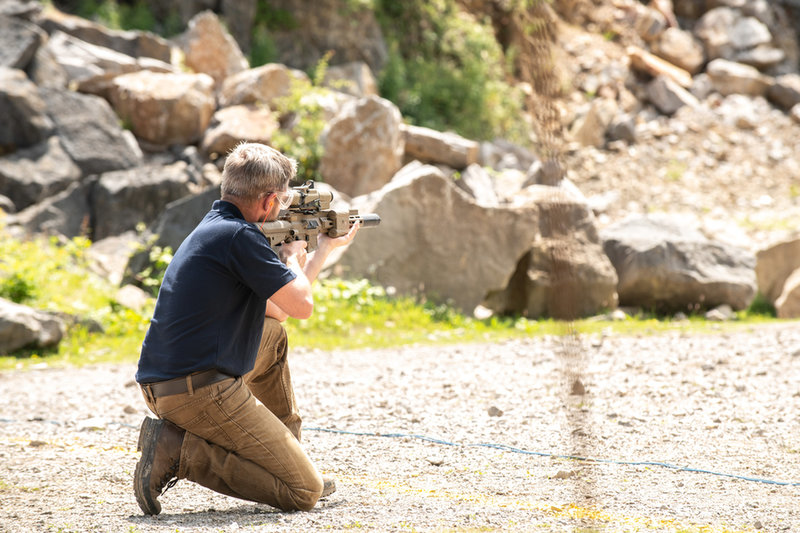Five minutes with Gary Waterfall on IT²EC
For over 30 years, the International Training Technology Exhibition & Conference (IT²EC) has been a key event for the military training community. After two consecutive cancellations due to the Covid-19 pandemic, the next in-person edition of the annual event will be IT²EC 2022 in London. Clarion Events senior defence adviser Gary Waterfall tells us about what to look out for.
In the UK, defence accounts for 50% of central government carbon emissions and, as outlined in Boston Consulting Group’s recent report The Growing Climate Stakes for the Defence Industry,defence’s contribution to global CO2 emissions could hit as much as 25% by 2050 if changes are not made.
Climate change has the potential to unearth new threats to military forces and the societies they protect. Whether it’s undermining the usefulness of current military assets or creating conflict between states over scarce resources, a deteriorating environment could add a new layer of complexity to existing risks while also giving rise to new threats yet to be considered by the defence industry. It’s therefore critical that defence develops capabilities that reduce carbon emissions whilst also equipping soldiers with the tools to handle these emerging threats.
The use of sustainable test and evaluation (T&E) practices will be indispensable in the industry’s collective fight against climate change. By using the latest advancements in digital technology, T&E can continue to safely deliver effective capabilities to the front line while also limiting the environmental cost these processes have on our world. Moreover, T&E can also provide the opportunity to evaluate sustainable technologies, proving how they can be used most effectively in a climate-changed world.
Dstl is playing its part in helping the UK and its allies stay ahead of those who wish us harm and threaten our way of life.
How is IT²EC 2022 shaping up?
Very well. Coming up on two months out from the show we are on target for a great reunion of the European training, simulation and education industry in April at the ExCel Centre in London.
What should we know about the conference’s theme?
This year’s event has an overarching theme of navigating rapidly evolving technologies for training and education. As seen by the fact that data, modelling, algorithms and simulations are now a part of our daily news cycles, what were potential plans for digital twins and other relevant technologies are now considered as critical, as opposed to something on the horizon.
As a result, topics such as "train, reflect, learn and train again", the reality-simulation-reality cycle and the digital twin approach are recognised as fundamental enablers for developing and delivering robust training systems - and the only cost-effective way to train with the necessary degrees of reality.
Under this wider theme, the IT²EC conference will expand on the digital twin philosophy, the risks of AI and the applications of human and machine learning for training. Then the conference will drill down into three key streams: technologies and archIT²ECtures, human factors and performance, and emerging solutions.
Between them, discussions will consider topics such as command and control, simulation interoperability and architecture, big data collection, analysis and results delivery, human data and human-sensor interaction, experience and behaviour and much more.
What will be the highlight of the conference?
The headlines over the last couple of months have highlighted the ongoing importance of the role of NATO when considering geopolitical stability in Europe. We are reflecting that in the IT²EC conference agenda with a strong NATO presence.
A key discussion will be a panel session on 27 April featuring FVM project manager Lars Jansson, Swedish Armed Forces simulation system developer for military training Captain Peter Lindskog, NATO head of modelling & simulation Wolfhard Schmidt and Bharat Patel from the UK’s Defence Science and Technology Laboratory (Dstl). They will discuss the Swedish Ministry of Defence-ledViking 22 NATO exercise. Leveraging modelling and simulation as a service technology and process.
Then on 28 April, Royal Air Force Wing Commander Ruari Henderson-Begg, chair of the NATO Modelling and Simulation Group Dr Robert Siegfried and NATO Allied Command Transformation Assistant Chief of Staff Joint Force Development Brigadier General Ilmars Lejins will also join forces to discuss distributed synthetic training and a roadmap towards a future NATO capability.
Another one not to miss will be the day one opening keynote, which will be delivered by Commandant General of the Royal Netherlands Marine Corps Major General Richard Oppelaar.

// Dstl’s FILS technology demonstrator programme delivered a next-generation prototype assault rifle. Credit: Dstl Crown Copyright.
What will be the exhibition floor highlights?
We have a good mix of exhibitors for this year’s event from the primes to SMEs to newer players in the defence training and simulation space. All of them are doing extremely interesting things in areas such as wearable technology, virtual and augmented reality, 5G, AI and machine learning, autonomous systems, robotics and cognitive enhancement. A must-see is the DisTec show floor experience, which will explore the disruptive technology solutions re-shaping the future of training in military and civil domains.
The beauty of in-person events such as IT²EC is the platform it offers as a real melting pot of innovation. We put all these organisations from industry, academia, and government into one room, and the discussions that are started, the spark of new ideas – it’s an electric atmosphere and quite thrilling to be a part of.
// Main image: Clarion Events senior defence adviser Gary Waterfall. Credit: CMS Strategic
Military training and simulation